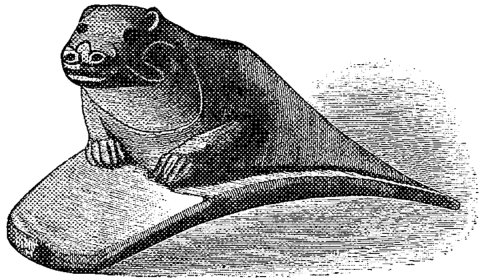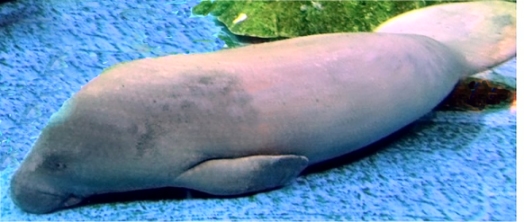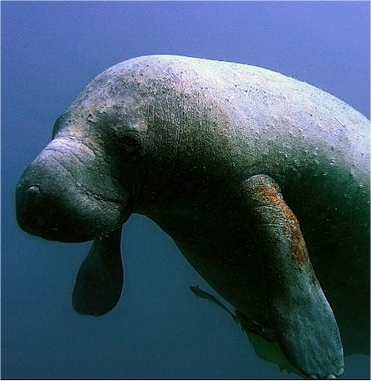Word "Nummo" to Describe the Alien Nummo meant Manattee
Updated July 2023
 Manatee Mississippi ValleyDorey, Day of the Fish, p. 31 |
Seven stone carvings of manatees, which were described as being religious in nature, were found in the mounds of the Mississippi Valley around the 1800s. I believe that these figures were associated with the alien Nummo and are ancient.Dorey, Day of the Fish, p. 12
Stone carvings of mastodons were also found in the mounds suggesting that the manatee carvings date to the time of the mastodon. “Fossil evidence indicates that mastodons probably disappeared from North America about 10,500 years ago, as part of a mass extinction of most of the Pleistocene megafauna that is widely presumed to have been a result of human hunting pressure.”Dorey, Day of the Fish p. 32
 West African Manatee (NOAA)Extracted from Picture by NOAA and doctored, Public Domain, https://commons.wikimedia.org /w/index.php?curid=91324530 |
In Masques Dogons (1938), Griaule pointed out that the word Nummo, to describe the alien water beings, also meant manatee.Dorey, Day of the Fish, 2022 version, p. 32 African manatees measure up to 4.5 m (15 ft) in length, and weigh about 360 kilograms (790 pounds).https://en.wikipedia.org/ wiki/African_manatee
This association may have come about because the Nummo were water creatures and symbolized by a cow. Manatees are known as "sea cows" and have cow shaped noses. The Nummo, who were identified with the divine feminine, were also symbolized by the sun. In the Dogon language, the sun’s name, nay, had the same root as “mother,” na, and “cow,” na.Dorey, Day of the Fish 2022 version p. 31
 West Indian Manatee (NOAA)Extracted from Picture by NOAA and doctored, Public Domain, https://commons.wikimedia.org /w/index.php?curid=91324530 |
In some West African cultures, manatees were considered sacred and thought to have once been human. Killing manatees was taboo and required penance. In other West African cultures, the manatee was associated with mermaids. The Eight Nummo Ancestors, who were part human and part Nummo, were described as being like mermaids with a fish-tailed lower body and a human upper body. I believe that in those cultures, the manatee symbolized the Eight Ancestors.Dorey, Day of the Fish p. 32
South American Indigenous Peoples must have also revered the manatee. Once Catholicism entered the South American Indigenous cultures, the observance of Lent came with it. During Lent the manatee was in great demand. The fat from the manatees was used in the lamps of the churches and the hide was cut into slips to supply cordage.
Throughout my research, I associate the Master (Mistress) of Speech, who was one of the Eight Ancestors and the sacrificial figure in the Dogon religion, with Christ. She was resurrected on the fifth day of the week, which I believe is where the observance of Good Friday originated. In Catholicism, Lent leads up to the crucifixion of Jesus on Good Friday and the Resurrection on Easter Sunday.Dorey, Day of the Fish p. 259
During some European fire ceremonies held on the first Sunday in Lent, the effigy being burned was named "grandmother". In the Dogon religion, the Master (Mistress) of Speech’s trunk or womb was known as “belly of the grandmother.”Dorey, Day of the Fish p. 41
Dogon related artifacts in the Americas indicate that Indigenous Peoples practised this ancient religion before they were isolated from the rest of the World at the height of the last ice age or Last Glacial Maximum 15,000 to 24,000 years ago.Dorey, Day of the Fish p. 11 These findings once again indicate the incredible age of the Dogon religion, which according to Marcel Griaule, was known to all West African people.
For more information on the Dogon religion refer to my books, The Master (Mistress) of Speech, The Nummo, Day of the Fish and The Rose.